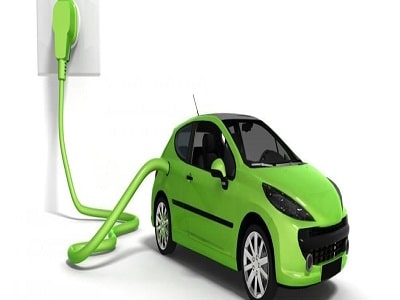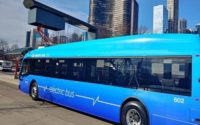FAME-II Scheme: Driving India Towards Sustainable Future
The growing adoption of vehicles owing to urbanization activities is contributing to vehicular emissions, which is negatively affecting the climate. To curb the rising pollution levels and encourage clean transportation systems, the Indian government is taking stringent measures such as FAME, FAME II, PLI scheme, and others.
According to the 2020 World Air Quality Report, 22 Indian cities are among the 30 most polluted cities across the world owing to the rising concentration of 2.5-micron particulate matter emitted from vehicle exhaustion. The average rate of registration of new vehicles in India is 17%, which is expected to increase further with rapid urbanization and growing personal disposable incomes. The current trend can negatively impact health as well as put undue strain on India’s foreign exchange reserves. However, policymakers and business leaders have been working towards changing the face of transportation to improve air quality with clean energy alternatives and reduce pollution caused by vehicles that contribute to 65% of India’s annual carbon emissions. India’s e-mobility initiatives for pollution-free commercial and private transportation have prompted the entry of new e-vehicles, which can help to promote green mobility and electrification. The Indian government is showing immense support for driving the adoption of EVs and make India the manufacturing hub of EVs with favorable policies.
The new FAME-II subsidy has been devised for faster adoption and manufacturing of electric vehicles in India with better incentives for electric vehicles and the right policy direction for the development of future technology. The first phase of the FAME (Faster Adoption and Manufacturing of Hybrid and Electric Vehicles) scheme was laid out in 2019 when the eligibility criteria included a minimum range of 80 km and a minimum top speed of 40 kmph for an electric two-wheeler for the subsidy. However, the newly amended scheme with an outlay of Rs. 10,000 crores have been made for three years till 2022, which extends the subsidy amount from Rs.10,000 kWh to Rs.15,000 kWh for battery-powered two-wheelers. The phenomenal move from the government is likely to bring down the cost of electric motorbikes and scooters, which can help promote their adoption. The Centre has also extended the FAME scheme to reduce dependency on fossil fuels by March 2024.
The second phase of the FAME India scheme puts more emphasis on supporting the electrification of public and shared transportation including 7090 e-buses, 55,000 e-4 passenger cars, 5-lakh e-3 wheelers, and 10-lakh e-2 wheelers. Under the revised policy, 40% of the total price can be covered instead of the previous maximum of 20%. The FAME 2 scheme also provides fiscal support to the plug-in hybrid vehicles as well as those with a sizeable lithium-ion battery and electric motor, depending on the size of the battery. Manufacturers involved with the production of electric vehicles and their components, including batteries and electric motors will directly benefit from the FAME-2 scheme. The Centre has asked the state governments to frame policies and provide additional fiscal and non-fiscal benefits to buyers and manufacturers.
Electric Vehicle Industry Growth Post FAME 2
Rising Adoption of Electric Two-Wheelers
The revision of the FAME scheme has electrified the electronic vehicle (EV) industry as the push is imperative for faster green vehicle adoption. As per the Department of Heavy Industry, the number of electric vehicles sold under FAME 2 has reached beyond 78000+, which signifies a shift towards green mobility in the country. Battery-powered electric two-wheelers offered by companies such as Okinawa Autotech Pvt., Ampere Scooters, Ather Energy Ltd., Hero Electric Pvt. Ltd., and Revolt Motors are expected to become more affordable as the prices could drop down by 10-12%. Severeal electric two-wheelers would be available in the sub-₹70,000 price segment, which has been dominated by combustion-based vehicles. Earlier, EVs used to be a lot costlier than vehicles with internal combustion engines by around Rs. 20,000, which was a major roadblock for the adoption of EVs in the country. Sales of electronic vehicles have increased during the pandemic and the additional subsidy could help to flourish the EV market. Ather is the first company to slash the price of its flagship 450X electric scooter by Rs.14,500 after the government’s announcement of the FAME-II scheme.
Electric Mobility in Public Transportation System
Acquiring and operating an electric bus fleet can be expensive than its internal combustion engine counterparts, specifically due to the high cost of lithium-ion batteries. Therefore, incentives of Rs. 20,000 per kW for electronic buses will be provided to encourage state transport units (STUs) under the FAME-II scheme. The government has planned to procure electric buses and electric rickshaws to promote green public transportation systems in the country. Currently, Delhi, Gujarat, and Nagpur have the highest fleet of e-buses, that come with swappable batteries and run a full day on a single charge. In August 2019, the Department of Heavy Industries had sanctioned the procurement of 5595 e-buses across nine major cities in India to fulfill the aggravating demand for clean public transportation systems. The Delhi Government has planned to engage 300 electric buses that are expected to hit the road by October 2021.
Amplifying Charging Infrastructure of e-Vehicles
The government’s plan to expand the charging infrastructure of electronic vehicles with the active participation of both public sector and private enterprises is a bold move to amplify the adoption of electric vehicles. FAME 2 will encourage the interlinking of renewable energy sources to extend pantograph charging and flash charging units. Indian energy major, TATA Power, will set up state-of-the-art electric vehicle charging stations at state-run Hindustan Petroleum Corporation Ltd. outlets in cities and highways. In the same line, Reliance Industries Ltd. has unveiled a USD10 billion plan for solar and energy storage to build Advanced Energy Storage Giga Factory for creating a fully integrated, end-to-end renewable energy ecosystem. The development and accessibility of electric vehicles for charging infrastructure are essential for the expansion of electric vehicles in India. Besides, operating EVs resulted in a drastic reduction of greenhouse gas emissions (approx. 3,558 tons).
PLI scheme for Advanced Chemistry Cell Battery Storage Manufacturing
The PLI scheme introduced by the government is to provide manufacturers and producers an incentive for boosting the domestic production of electric vehicle batteries. Through this scheme, the Union Government aims to install a manufacturing capacity of 50 GWh of advanced chemistry cells and 5GWh of “Niche” ACC. PLI granted for battery manufacturing can help electric vehicles to become affordable. Through this path-breaking initiative, the government aims to develop India as a manufacturing hub of electric vehicles and their related components to save oil imports worth ₹2-2.5 trillion as well as reduce the dependency of the auto industry on China. Sales of electric vehicles in India decreased by 19.9% to 236,802 vehicles as a result of COVID-19 induced lockdown and disrupted supply chain owing to deteriorating ties with China. Introducing the PLI scheme for accelerating the production of Lithium-ion cells can lead to substantial jumps in volumes of electric three-wheelers and two-wheelers in the next five years. Besides, the localization of cells and batteries can reduce the cost of electric vehicles, which can help people to transition from traditional vehicles to electric counterparts.
Conclusion
In February 2021, electric vehicles in Delhi completed two crore kilometers, which resulted in around 500 kg of reduction in particulate matter emissions in the region. Besides, the introduction of EVs prevented about 2,573-ton carbon emissions and saved about 13.3 lakh liters of fuel. Although two-wheelers are the largest beneficiary of the FAME-II scheme, not every electric two-wheeler can benefit from it. Thus, introduction of more EVs on the road can lead to better air quality, reduced pollution, improved community health, and safeguard energy security. However, the scheme does not favor every segment of electric mobility but to attain carbon neutrality and sustainable development, every sector needs assistance from the government through favorable policies and subsidies. According to a report by Credit Rating Information Services of India Limited (CRISIL), 95% of the electric scooters are ineligible for the FAME-2 subsidy. As per the FAME-2 norms, electric vehicles powered by higher than the 250-watt electric motor and a top speed of above 25 kmph are eligible for FAME-2 subsidy.
According to TechSci research report on “Global Electric Vehicle Components Market By Component (Battery Pack; Electric Motor; Controller; Vehicle Interface Control Module; Others), By Vehicle Type (Electric Passenger Car; Electric Commercial Vehicle, Electric Two-Wheeler, & Electric Three-Wheeler), By End User (OEM; Aftermarket), By Region, Competition, Forecast & Opportunities, 2025”, the global electric vehicle components market is expected to grow at a formidable CAGR on account of growing awareness about vehicle emissions and rising government subsidies on purchase of these vehicles.
According to another TechSci research, “India Electric Vehicle Battery Market By Battery Type (Lithium-ion, Nickel Metal Hydride Battery, Lead Acid) By Application (BEV, PHEV & FCEV) By Battery Capacity (less than 5 kWh, between 5-15 kWh and greater than 15 kWh) By Company, By Region, Forecast & Opportunities, FY2027”, India electric vehicle battery market is anticipated to grow during the forecast period owing to the rising awareness about environment and high investments by battery manufacturers. Besides, initiative from government of India to increase domestic production of batteries as well as increasing focus on fuel-efficient vehicles are likely to propel the demand for India electric vehicle battery market in the coming years.




